Note: Both front brake discs must be replaced or reground at the same time to prevent uneven braking.
Inspection
1. Apply the parking brake. Loosen the front wheel nuts, raise the front end and place it on stands. Remove the corresponding front wheel.
2. Remove the front brake caliper and support bracket (paragraph 3). without disconnecting the hoses. Support the caliper on a stand or tie it away from the brake with a piece of wire so as not to pull on the hose.
3. Temporarily install two wheel nuts spaced the same diameter opposite each other so that their flat ends rest on the disc. Tighten the nuts in sequence to secure the disc.
4. Scrape the disc to remove all traces of corrosion from it. Turn the dial to check for deep scratches, grooves or cracks. Using a micrometer, measure the thickness of the disk in several places. The minimum thickness value is stamped on the disc hub (see fig. 4.4, a, b). Minor wear and light scratches are acceptable. In case of excessive wear, the disc must be removed and replaced or reground, observing the minimum thickness requirements. If the disc is cracked, it naturally needs to be replaced.
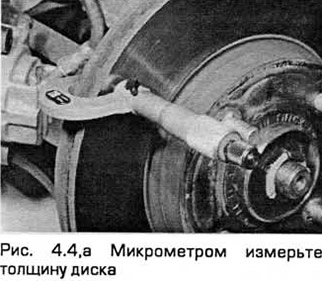
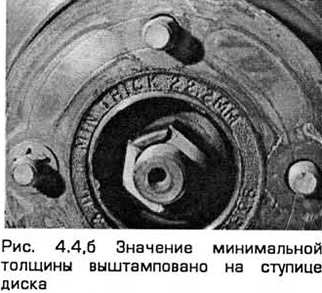
5. Using a dial indicator or a metal bar and feeler gauges, check the end runout of the disc at a distance of 10 mm from its outer edge (see fig. 4.5). Compare the measurement result with the Specifications. The difference between the minimum and maximum readings during rotation of the disk is its end runout.
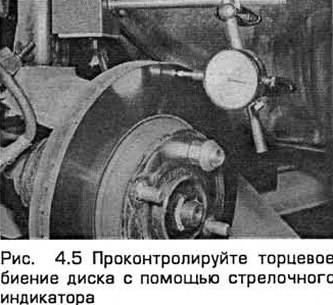
6. If the runout is higher than the regulated one, check the disk for thickness variation as follows. Put 8 marks on it at 45°intervals and measure the thickness of the disc with a micrometer in these places, departing from the edge by 15 mm. If the difference between the minimum and maximum readings exceeds the regulated value, the disc must be replaced.
7. Hub end runout can be checked in the same way. To do this, you need to remove the disk (see below), install the measuring device, and then, slowly rotating the hub, control the runout. If the hub runout exceeds the regulated (see Technical Requirements), then it can be reduced by replacing the hub bearing (chapter 10), and then repeat the disc end runout check.
Withdrawal
8. With the wheel and caliper removed, remove the wheel nuts that were temporarily installed (see point 3).
9. Mark the disc and hub so that they can be aligned later if you install the disc again.
10. Remove two special washers (in the presence of), and then remove the disc from the wheel studs (see fig. 4.10, a, b).
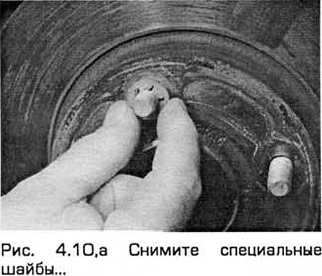
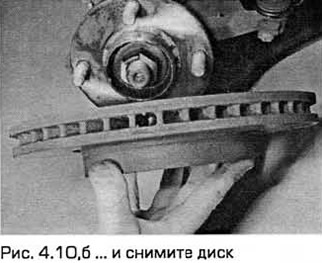
Installation
11. Make sure that the mating surfaces of the disc and hub are clean. Then install the disc on the wheel studs according to the marks made during removal.
12. Install two special washers (in the presence of).
13. Install brake caliper and support bracket (paragraph 3).
14. Install the wheel and lower the vehicle to the ground.
15. Before resuming trips, carefully check the brakes in the car.
Visitor comments